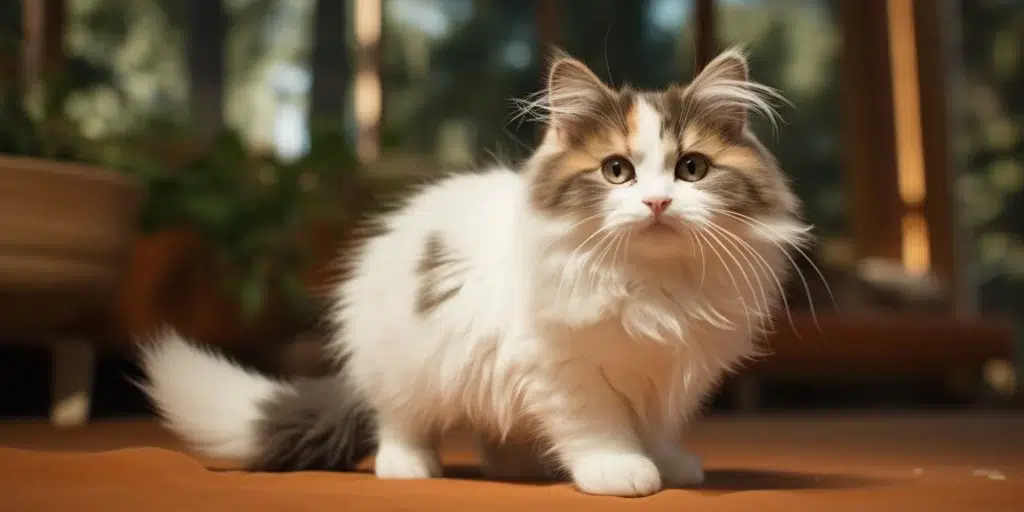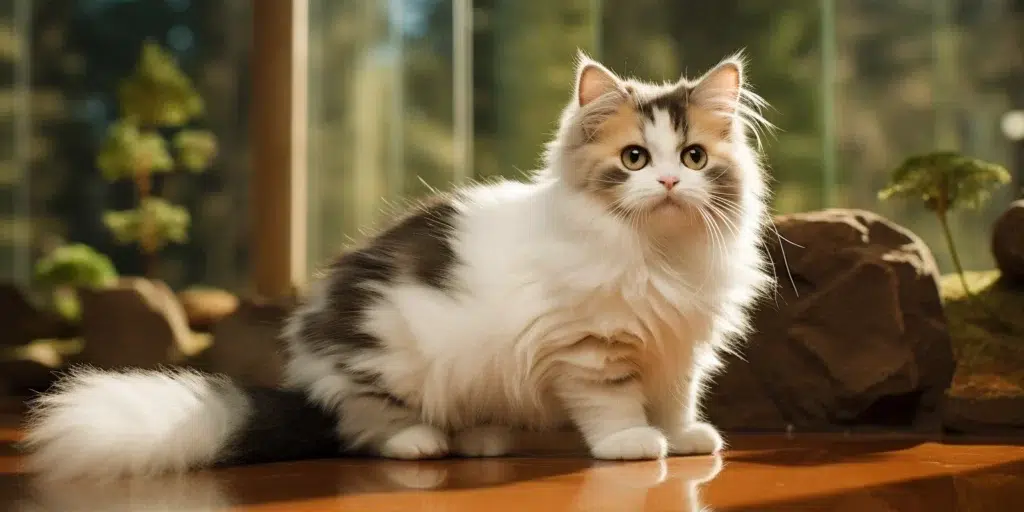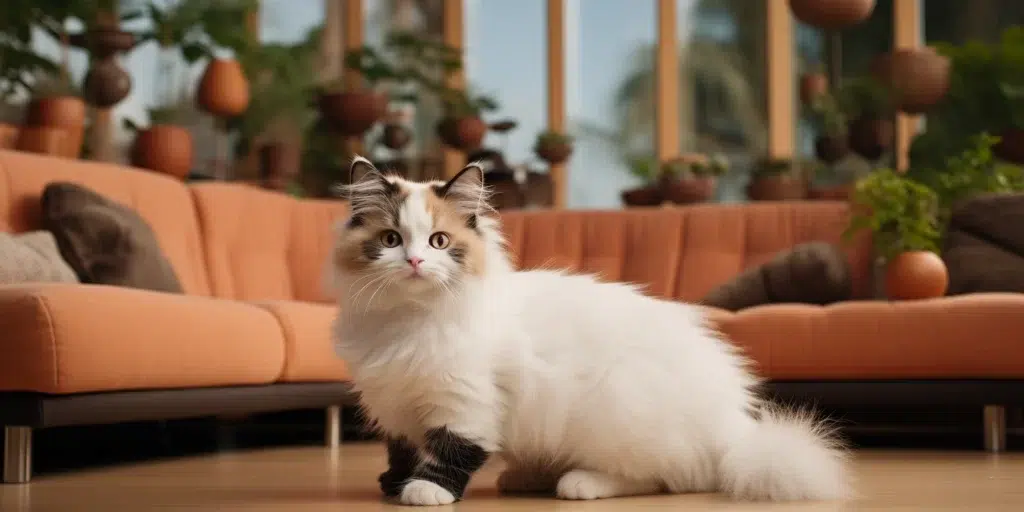Deciding between a male and female Munchkin cat can be a puzzling task for potential cat owners. As one of the most unique and recognizable breeds, thanks to their short legs and long bodies, Munchkin cats capture hearts with their endearing appearance and affectionate nature.
In this comprehensive guide, we will explore the Male vs Female Munchkin cat traits to help you understand the nuances between the sexes of this wonderful breed. Whether it’s size, temperament, or health considerations, this post aims to provide valuable insights into the characteristics of male and female Munchkin cats, ensuring you make an informed decision for your family.
When considering bringing a Munchkin cat into your home, it’s important to delve into the specifics of each gender to ascertain which may be a better fit for your lifestyle and preferences. The differences between Munchkin genders can influence their behavior in the home environment, interactions with other pets, and even their training and health care needs.
Our goal is to equip you with all the pertinent information about both male and female Munchkin cats so you can decide which gender aligns with your expectations of feline companionship.

Visual Differences
| Characteristic | Male Munchkin | Female Munchkin |
|---|---|---|
| Average height (adult): | 5-8 inches | 5-7 inches |
| Average weight (adult): | 6-9 pounds | 6-8 pounds |
| High-intelligent and perceptive | 12-15 years | 13-15 years |
| Exercise: | Moderate – Daily play | Moderate – Daily play |
| Grooming needs: | Low to moderate | Low to moderate |
| Family-friendly: | Very friendly | Very friendly |
| Other pet-friendly: | Generally friendly | Generally friendly with proper introductions |
| Trainability: | High | High |
Male Munchkin Overview
When considering a male Munchkin cat, one must take into account their distinct physical characteristics and personality traits. Males often exhibit a robust and sturdy frame, slightly larger than their female counterparts. They exude a playful yet easy-going demeanor that makes them amiable companions in a variety of environments. With an intelligent look in their eyes, male Munchkins possess a curious nature that drives them to explore their surroundings with vigor and enthusiasm.
Aside from their energetic exploration, male Munchkins form strong bonds with their human families. They are renowned for their sociable behavior, seeking attention and affection quite openly. Their friendly nature typically extends to children and other pets as well, making them ideal cats for households with a lively social atmosphere. Additionally, males might display territorial tendencies less prominently than females, which can influence their interactions with other animals.
Moreover, male Munchkins tend to mature a bit more slowly than females. This extended kitten-like phase means they may carry their playful, kittenish behaviors further into adulthood. This prolonged period of high energy and merriment can be a delightful aspect for owners who enjoy an interactive feline presence in their homes. Engaging in playtime with your male Munchkin will not only satisfy his need for stimulation but also foster a deep and lasting bond between pet and owner.
Training A Male
Males are often characterized by their playful mentality which can make training sessions engaging and enjoyable. Their natural curiosity drives them to explore new tricks and commands. When training a male Munchkin, positive reinforcement techniques work exceptionally well as they are quite motivated by treats and praise. It’s essential to keep these sessions short and fun to maintain their attention.
Male Munchkins are social learners who benefit from observing other pets or their human companions perform the desired behaviors. Puzzle toys and interactive games can stimulate their mental capacities and keep them good-humoredly occupied. Consistent training from an early age will help inculcate good habits in these spirited felines.
Health & Care
Males generally require similar health care to females, but there are distinct considerations. Neutering is recommended for males not intended for breeding as it can prevent unwanted behaviors such as spraying and reduce the risk of certain health issues like testicular cancer. Regular vet check-ups are vital to ensure they’re healthy, as Munchkins can be prone to health concerns due to their distinctive leg structure.
Attention to diet is important due to their potential propensity towards weight gain, especially if they’re less active. A high-quality diet tailored to their energy levels will promote wellness. Dental hygiene, regular grooming (regardless of hair length), and routine physical examinations are integral parts of caring for a male Munchkin.
Suitable for:
The male Munchkin’s temperament is perfectly suited for families or singles looking for a playful, loving companion that thrives on social interaction. Multifamily households or ones with other pets will find males fitting in harmoniously where there’s continuous activity and engagement. For those who enjoy nurturing an enduring playful side of their pets, male Munchkins will undoubtedly bring joy and spirited fun into the home.

Female Breed Overview
Female Munchkin cats are known for their grace, poise, and nurturing instincts. While sharing many traits with males like the signature short legs, females can sometimes have a more delicate build. They are equally charming with a demeanor that can range from sweetly demure to assertively independent. Female Munchkins often demonstrate more reserved or selective tendencies in terms of attention-seeking; however, once they form an attachment, it tends to be strong and profound.
The refined nature of female Munchkins means they may assess situations more cautiously than males before leaping into action – cursorily speaking. This cautious approach contributes to an aura of elegance that surrounds them; however, it belies their capability for mischief and playfulness when the mood strikes them. Emotionally intelligent, they have a remarkable ability to gauge the mood of their human counterparts, providing comfort or space according to the circumstances.
In contrast to males, female Munchkins reach maturity quicker, which may result in earlier displays of adult behaviors such as territorial marking or nurturing tendencies if they have had a litter of kittens. While these behaviors are natural, they also give an extra layer of complexity to the personality of a female Munchkin. Their maternal instincts make them excellent mothers, protective and caring of their offspring.
Training A Female
Female Munchkins can be just as trainable as their male counterparts but may require an approach that respects their independent streak. They respond best to gentle encouragement and consistency in training routines. Females may take more time to warm up to new commands or tricks but will flourish with patient guidance.
Interactive toys that involve hunting or chasing simulations can tap into their instinctual behaviors while providing training opportunities outside of typical commands. Rewarding good behavior promptly with treats or affection will cement the learning process effectively with female Munchkins.
Health & Care
Much like males, female Munchkins should undergo spaying if breeding isn’t intended; this is beneficial for preventing unwanted litters and reducing health risks associated with reproductive organs. Their unique body shape requires careful monitoring for signs of back issues or arthritis as they age. An optimal diet that prevents obesity is crucial since excess weight can exacerbate skeletal stress.
Maintaining regular vet appointments is key in preemptively addressing any health concerns typical to the breed or those arising from individual conditions. Grooming needs tend to be low to moderate depending upon coat type – with regular brushing being sufficient for most.
Suitable for:
The discerning personalities of female Munchkins make them ideal for those who appreciate a cat that embodies independence while also possessing deep wells of affection. Households that can offer a balanced environment where a female can enjoy personal space at times yet interact on her terms will find joy in her companionship. Both quiet homes and those with moderate activity levels provide fitting environments for these elegant creatures.
Which One Is Right for You?
Choosing between a male or female Munchkin cat comes down to personal preference and what you’re looking for in a pet’s temperament and behavior. Consider your current living situation, daily routine, and the level of time you can invest in interaction with your feline friend. It is also recommended to meet both male and female cats if possible: individual personalities can sometimes transcend general gender traits.

Conclusion
Male and Female Munchkin cats showcase delightful individualities shaped by their gender-based tendencies while sharing enchanting breed characteristics that make them beloved companions worldwide.
Whether you choose a male or female Munchkin cat, understanding each gender’s nuances will improve your chances of developing an enriching bond with your furry family member tailor-made to your way of life. Remember, the love and devotion shared between you and your Munchkin cat will far outweigh any differences between male or female quirks!